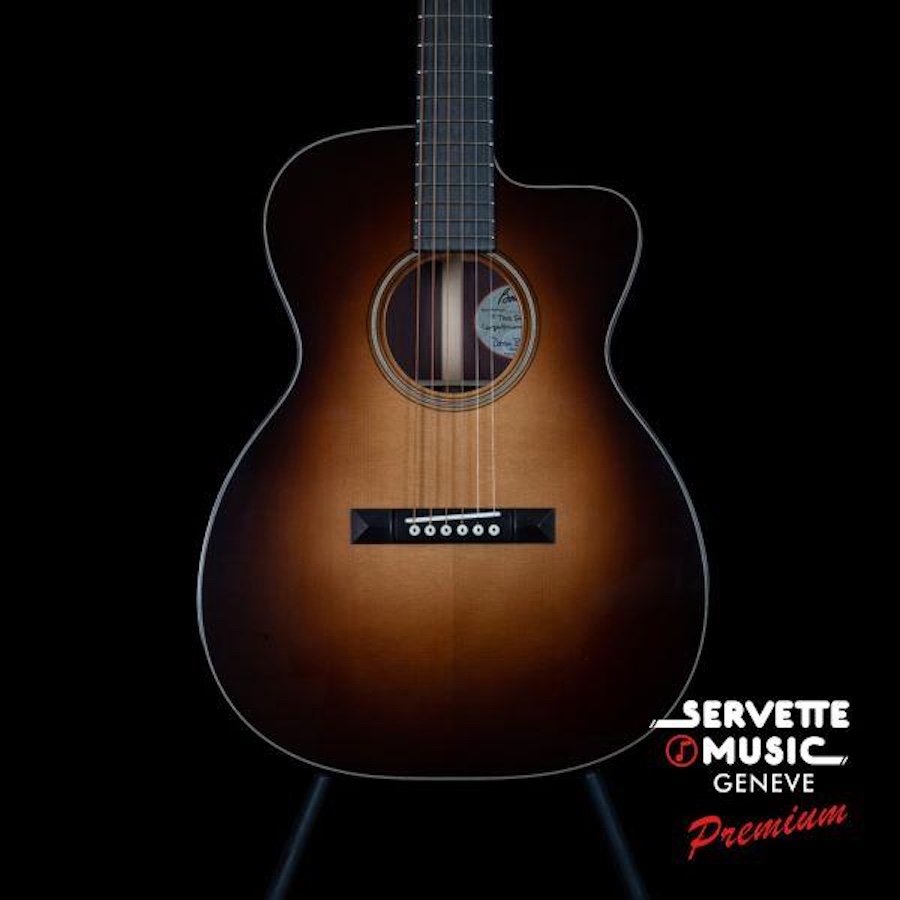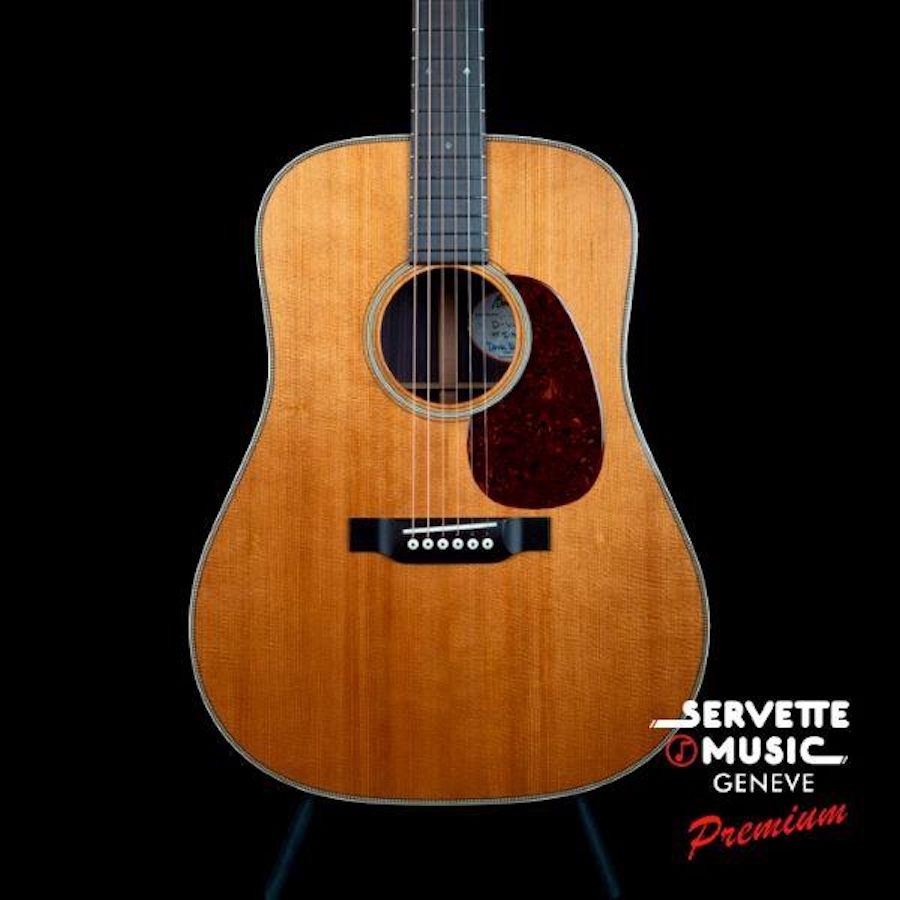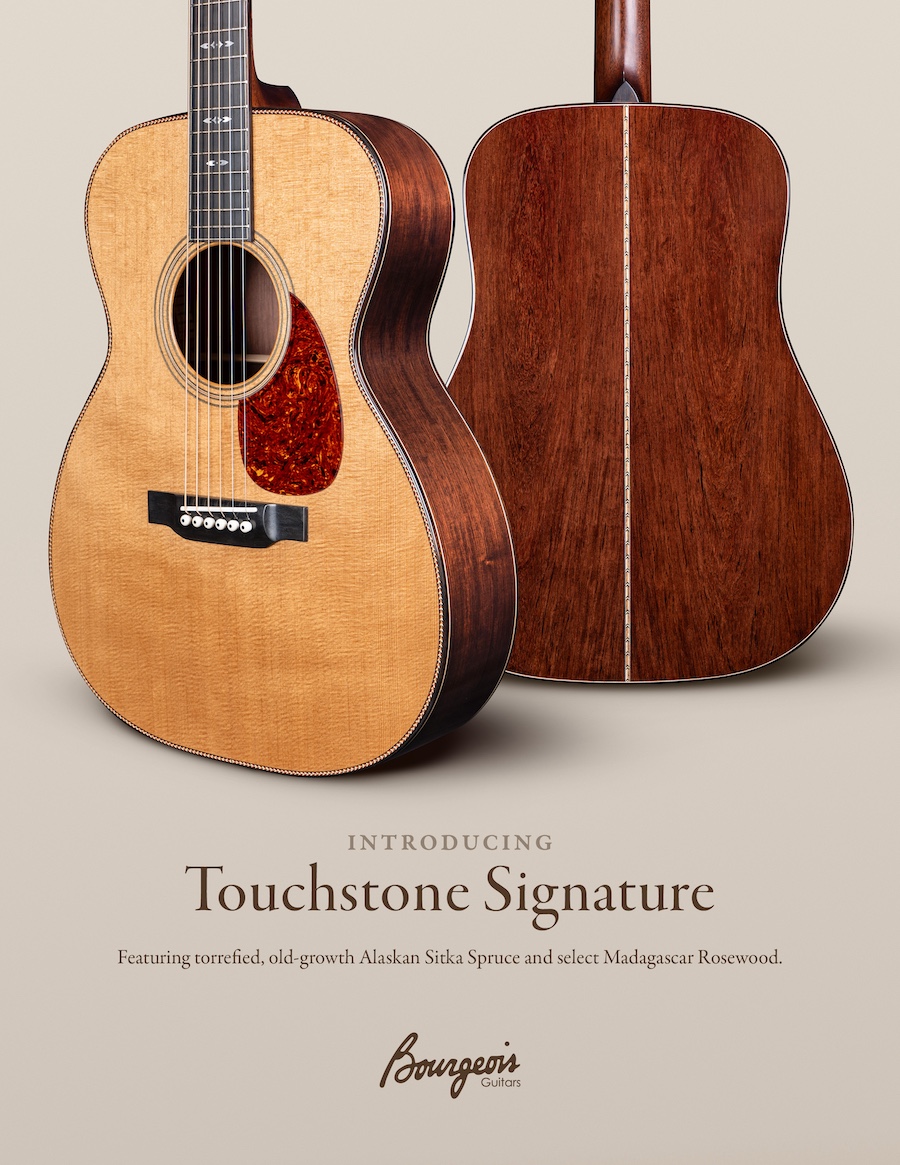> The Bourgeois operation is a small team of approx. 30 people in Lewiston/Maine, most of them luthiers, working in small workshops as craftsmen. How many guitars do you produce on a yearly basis? How long does it take to produce one folk guitar? How do you plan production to meet the dead-lines of your dealers?
We have more than 30 employees, 22 of whom produce more than 500 guitars per year in our Lewiston Workshop. One of our basic models takes a little over 40 hours to build. Guitars are currently built in batches of 11. Each batch takes 9 weeks to complete.
Each quarter, dealers are asked to place orders for guitars that will be delivered six month in the future. For example, guitars ordered in January will be delivered in the third quarter of the year, and guitars ordered in April will be delivered in the fourth quarter. We try to reserve a few open build slots and also keep a few completed guitars in inventory. This allows us to quickly get stock to a new dealer, build guitars for artists, or help a dealer who runs low on stock and isn’t able to wait six months for delivery.

> You have a high reputation for selecting only the best of the best woods for your premium guitars. Is this true? How do you do it?
I’ve always loved wood. Over a nearly fifty-year career I’ve developed personal relationships with some wonderful tonewood suppliers. The best suppliers share my passion for fine guitars and want to see their wood put to the highest possible use. Good, long-term customers are often rewarded with preferred status, which sometimes comes in the form of being offered first refusal on stashes of unique woods. Suppliers are the unsung heroes of the luthier world! I’m grateful to have benefited from my relationships with so many of them.
> You also have a reputation for making instruments with superlative resonance and tone when building guitars especially when scalloping bracings. How do you do it?
No two pieces of wood are exactly alike. Individual examples of the same species can vary in weight, stiffness across and along the grain, and in properties of internal damping. Rather than build all tops and backs to exactly the same dimensions, we purposely adjust dimensions to account for variations in individual tops and backs. For example, instead of thicknessing all tops to .125” or to some other predetermined dimension, top thickness is determined by stiffness along the grain. This method of thicknessing results in variations of stiffness across the grain, which is then addressed while shaping the bracing. The objective is to produce a top that is stiff enough to support string tension while flexible enough to vibrate freely.
While shaping braces we also seek to distribute resonant frequencies as widely as possible. A tall, thin triangular shaped brace can carry the same load as a shorter, rectangular brace with a rounded top. These two shapes, however, will produce different resonances. Through a process of tapping the top and back and listening to frequency responses it’s possible to decide which shapes will produce the most desirable frequency responses. Though this process may sound complicated, a trained luthier can evaluate and voice a top or back relatively quickly.

> In the large range you propose (Slope D, D, OM, DBJ, L-DBO, L-DB2, small jumbo’s, Nova, Banjo Killer, Large Sound-hole D, Advanced, DB Signature, as well as Nova, Odissey and Soloist that are cutaways, and many more. What is your favorite or what are your favorites to this day?
From a luthier’s point of view I don’t really have favorites. As a player, my personal favorites have changed over the years as my playing has evolved. I started out playing Dreadnoughts, which can’t be beat for power and volume. Later, after I branched out from playing mostly in old-timey string bands, I discovered the incredible versatility of the OM model, which proved better suited for dabbling in variety of playing styles. Later in life I am less physically flexible than my earlier self, and have grown to prefer smaller, short scale guitars. I’ve found that the L-DB model has the best combination of presence, playability and tonal sparkle to tempt me to continue learning and playing new music.
Guitars have many different personalities, as do guitar players. The world would be far less interesting if all guitars were exactly alike!
> You propose only three models with cutaway (Nova,Odissey and Soloist). Is there a reason for this?
The Odyssey, Nova and Soloist come standard with cutaways. But Cutaways are also available as options on most OM, Dreadnought, JOM, GA, OMS, 00, 00/12 and SJ models.


